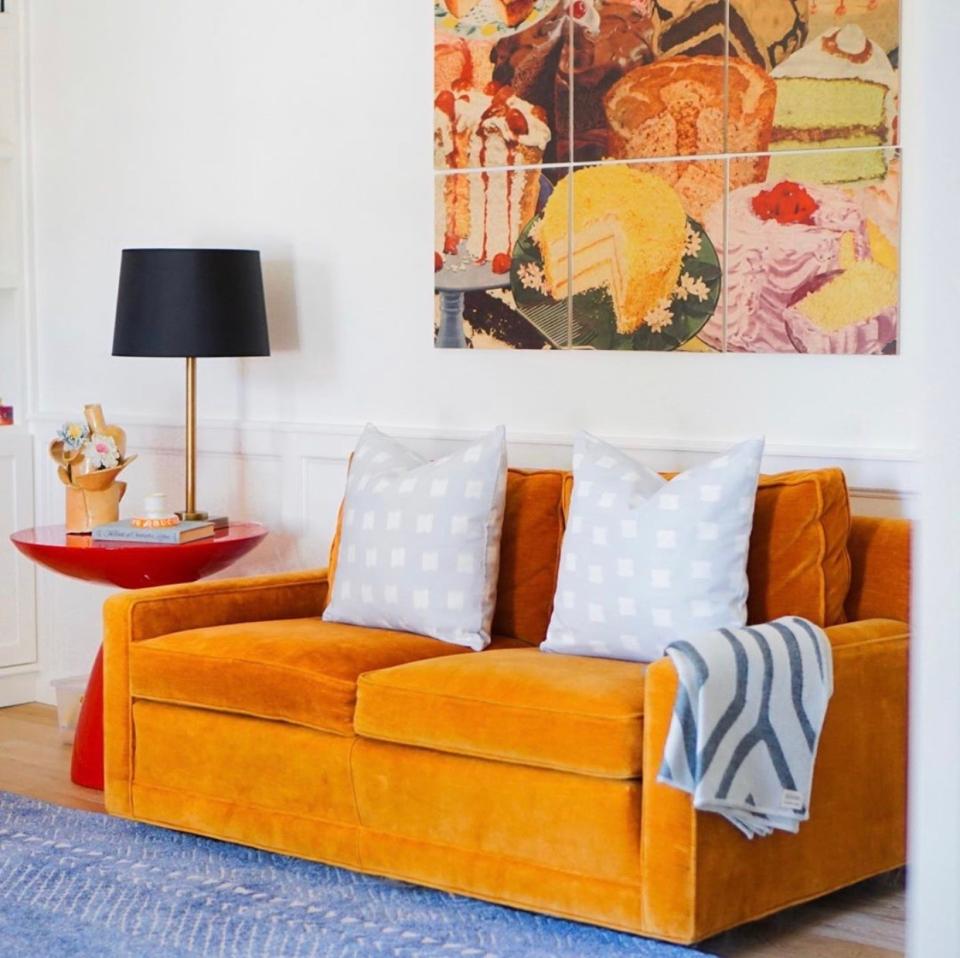Simple, Affordable Ways to Revamp Any Space Using Prints and Patterns
Perhaps you have reached the point of quarantine where you are ready to fully overhaul your space on your own, drilling and caulking skills be damned. And while the vision-boarding portion is more fun than grouting tile or ripping up your 1970s kitchen, a new look is still fully available to you. But it’s all about strategy—some calculated upgrades are more strategic than physically taxing.
This thought sparked my quest for accessible ways to completely reinvent a space more than just swapping out one throw for another. The key finding? Smartly utilizing prints and patterns. When considered correctly, by using wall coverings, strategic accessories, or a well-designed window treatment, a new room is born. Plus, these hacks can make a world of difference in any space without the permanence of a gut reno.
Home accessories brand Pepper—a young, direct-to-consumer company that offers fabric, wallpaper, table linens, and other home accessories—offers just the tools for such projects. We fell for Pepper thanks to its idiosyncratic yet accessible prints, surprising affordability, and accessibility to anyone who can click “add to cart.” But just what types of fabric are right for each job? Here, Pepper’s cofounders Erin Banta and Kelsey Brown give Clever their tricks of the do-it-yourself-quarantine-makeover trade.
Bathroom Refresh
Sprucing up a bath can feel like an intimidating project. Hardware and fixtures can get expensive, and tinkering with plumbing requires a call to the professionals. But, like it or not, most guests to your place will inevitably get a look at its decor. Erin and Kelsey swear that a smart wall covering will give the space new life. “Something that’s light and bright is going to make your bathroom look a lot larger,” says Kelsey. When she moved into her Brooklyn apartment, the powder room was swathed in a dark red. After she swapped it with white ground wallpaper, the space feels twice as big. Kelsey explains that it doesn’t matter if the pattern is large and bold or micro-mini—as long as the print feels airy, there’s no way to lose.
For renters who can’t risk their security deposits, the Pepper team suggests a bold shower curtain. Remove visions of traditional waxy neutrals—any of your favorite fabrics can become a shower shield with a few alterations. Buy a few yards of your favorite print and take it to your local tailor who can convert it (inexpensively) into a curtain. Paired with a fresh set of hand towels, an average powder room becomes boutique hotel–esque.
Make old pieces new
For many, custom-upholstered furniture is a pipe-dream project. Considering the labor, cost, and knowing how much fabric to purchase can easily turn off even ambitious home-dwellers. But Erin and Kelsey encourage tackling smaller pieces to add an accessible bespoke touch to your space.
Kelsey points to a pair of vintage lamps, their shades covered in Pepper’s Jasper print. “I went to the Brooklyn Flea Market and bought two brass lamps that were $25 apiece, I believe, and then just redid the lampshades in our fabric. And that’s something that somebody could also do themselves.”

Selecting window treatments
Most interior designers opine that a room is not complete without proper window treatments. But these features are rarely the number one priority for new homeowners or renters. Whether you inhabit a sleek, modern apartment or a historic townhouse, Erin and Kelsey think to-the-floor drapes are the way to go. “They go the longest way in terms of making the biggest impact,” Erin says. “A lot of times, rental spaces feel very temporary, and you’re dealing a lot of times with a white box. I think adding drapery makes it feel more complete and more permanent, like a true home.” Pepper offers affordable, custom-length curtains on its site—a game changer for DIY decorators.
Picking a pattern, Kelsey notes, is up to you. For those just dipping their toes into the land of color, Kelsey suggests something blue with a small-scale print, which is soothing and neutral without the flatness of beige. Pepper’s popular Poppy Blue is one example—tiny dabs of blue on a white cotton. “We call it, like, a no-print print,” Kelsey says. “And it basically creates a texture from far away.” Pure maximalists should go bold and pick a fabric with a range of colors in the print. Erin says, “It makes it easier to tie in all the different colors that you might be working with.”
The art of accent pillows
When they met in business school, Kelsey and Erin both lived in tiny West Village apartments. They knew these were not their forever homes—investing in furniture was off the table—but they wanted to add a touch of personality to their living spaces. “Pillows are the easiest way to do that,” Kelsey says. “Why would I replace my white IKEA couch when I could just find some inexpensive throw pillows to make it look fresh and new?”
To style a sofa or love seat, Kelsey suggests sticking to a palette while mixing bold prints with subtle ones. If they’re in the same color family, it all works. Pepper currently sells a range in unique patterns, and will introduce an option for custom-trimmed pillows, lumbar pillows, and Euro shams in September.
Originally Appeared on Architectural Digest

